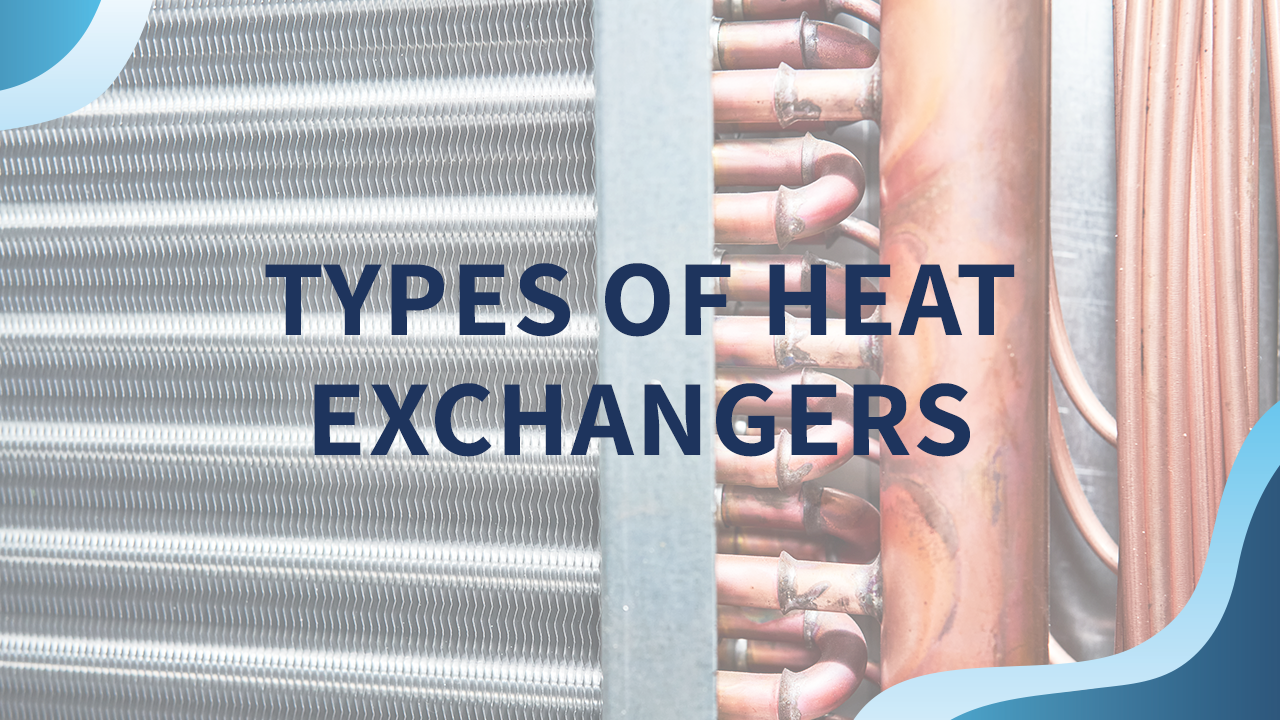At the core of HVAC systems, heat exchangers act as the heart, ensuring the temperature inside buildings remains at desirable levels, regardless of external weather conditions. Their ability to transfer heat efficiently enables units to cool or heat spaces effectively, providing the comfort essential for productivity and well-being. Understanding the diverse types of heat exchangers, their applications, and their significance in HVAC systems is necessary for appreciating their importance.
What Are the Different Types of Heat Exchangers?
Shell and Tube
Shell and tube heat exchangers consist of multiple tubes enclosed within a cylindrical shell. Typically made from copper, steel, or titanium, these tubes facilitate heat exchange between two fluids. One fluid circulates inside the tubes, while the other flows outside the pipes within the shell. This design maximizes the surface area for heat transfer, ensuring efficient thermal exchange.
A critical note about shell and tube heat exchangers in HVAC systems is their versatility. They can handle various fluids, making them suitable for multiple applications, from cooling water and refrigerants to oils and gases. Being adaptable allows you to use them in diverse HVAC scenarios, ranging from air conditioning systems in large office buildings to industrial processes requiring precise temperature control.
Shell and tube heat exchangers are engineered to withstand high pressures, making them indispensable in commercial HVAC setups. These heat exchangers excel in industries where there’s a need to handle fluids under significant pressure, such as power plants or chemical processing facilities. Their robust construction ensures they can operate reliably under intense conditions, making them the preferred choice in high-pressure HVAC applications.
Plate Heat
Plate heat exchangers are commonly used in HVAC systems where space is limited. Unlike their bulkier counterparts, these exchangers have multiple thin, corrugated plates stacked together. They create turbulent flow paths for the fluids, enhancing heat transfer efficiency. This turbulence disrupts the boundary layer of fluids, ensuring heat is exchanged rapidly. As a result, plate heat exchangers boast exceptional thermal performance, enabling units to achieve desired temperature changes swiftly.
Where space constraints are a concern, such as urban buildings or retrofit projects, plate heat exchangers emerge as ideal solutions. Their compact design allows for flexible installation, making them invaluable when optimizing available space is crucial. Some other situations you might use them include:
- District Heating: Plate heat exchangers are used in district heating systems, where heat generated in a centralized location gets distributed to multiple buildings or homes. These exchangers facilitate heat transfer from hot water in the district heating network to the water used for space heating and domestic hot water in individual buildings.
- Industrial Processes: Industries such as food and beverage, pharmaceuticals, chemicals, and manufacturing rely on heat exchangers for tasks like pasteurization, sterilization, and cooling of industrial machinery. Handling various temperatures and pressures makes them suitable for diverse industrial applications.
Finned Tube
Finned tube heat exchangers are different from your average system; metal fins are attached to the outer surface of tubes. They significantly increase the surface area available for heat exchange. By extending the contact area between the heat exchanger and the surrounding air, fins enhance the exchanger’s ability to transfer heat efficiently.
They’re also vital in HVAC systems where air cooling is essential. In AC units, these exchangers are commonly used to cool down refrigerants circulating within the system. As the hot refrigerant flows through the tubes, the metal fins significantly increase the surface area exposed to the ambient air. This process facilitates the rapid transfer of heat from the refrigerant to the air, resulting in the cooling of the refrigerant. Subsequently, the cooled refrigerant can continue its cycle, ensuring the indoor air remains at the desired temperature.
Furthermore, using finned tube heat exchangers, HVAC units can achieve optimal cooling performance without excessive energy consumption. The enhanced heat transfer capability ensures the system operates efficiently, reducing energy costs and promoting environmental sustainability. In residential, commercial, and industrial settings, these heat exchangers contribute significantly to creating comfortable indoor environments, enhancing the overall quality of living and working spaces.
Coil
Coil heat exchangers are prevalent in residential and commercial HVAC systems due to their cost-effectiveness and reliability. Coils are relatively inexpensive compared to other heat exchanger types, making them economically viable for manufacturers and consumers. Quality affordability is particularly crucial in large-scale HVAC installations requiring multiple heat exchangers. Coil heat exchangers enable cost-efficient solutions without compromising performance, making them a preferred choice in budget-conscious projects.
Coil heat exchangers are also renowned for their reliability and durability. The materials used in their construction—copper and aluminum—are corrosion-resistant and can withstand the rigors of continuous operation. Enhanced durability ensures a longer lifespan, reducing maintenance costs and improving the overall cost-effectiveness of HVAC systems. Their robustness makes them suitable for residential air conditioning units and industrial cooling systems, where reliability is paramount for uninterrupted operation.












